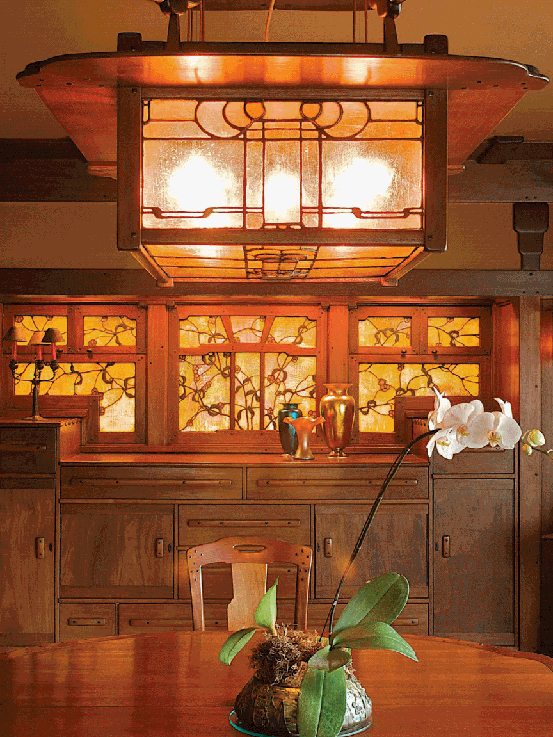
Foreword
Sudden seduction is sometimes the unintended by-product of genius. When David Mathias first encountered the work of Greene & Greene he was transported to a state of being akin to falling in love. Nor is it uncommon for an epiphany to occur in the presence of Greene & Greene’s artistic architecture and decorative arts. One realizes that the Greenes’ bold designs, sublime materials, satin finishes and sensuous craftsmanship signal a level of creative care far beyond that which the majority of architects — including the “greats” — have typically been able to muster. Charles and Henry Greene’s confident control over design and execution fills us with awe for their objects: light fixtures, rugs, picture frames, piano benches and much more. Ultimately, it is humbling to realize that a structure and its contents can provoke the emotional response that can come over a visitor to a Greene & Greene house. But this is surely the hyperbole of the over zealous, the reader will object. I can only offer that Greene & Greene had the same effect on me.
As an incoming freshman looking for a place to live at the University of California at Berkeley, I found myself standing across from the William R. Thorsen house designed by the Greenes in 1909. I learned that it had been the local chapter of the Sigma Phi fraternity since 1943, and, smitten by the splendor of the place — a truly seductive combination of Asian elegance and Western rusticity — I asked how I could become one of the guys of Sigma Phi. This bit of serendipity, and the subsequent experience of living in a Greene & Greene house for four years, had a life-altering effect. I have since observed this to be true of others who have also come into close contact with the Greenes’ work. David Mathias, author of this richly-personal appreciation of the Greenes, stands out among these. David comes to Greene & Greene from the perspective of an amateur woodworker with a fine aesthetic sense. Through his writing we are able to appreciate the Greenes’ houses and furnishings almost as if we were hearing from one of their builders. Through stunning and perceptive new photography, the illustrated spaces and furnishings illuminate the genius of the Greenes’ designs, material selection and craft, which has caused so many to celebrate and be seduced by their work. Within a narrative that describes the personal impact of the Greenes on the author, the power of the Greenes’ creative output is persuasively communicated. We can also understand how that particular brand of creativity might have been appreciated by clients of the turn of the last century. Being a woodworker, Mathias also pays due homage to John and Peter Hall, the Swedish brothers who worked closely with the Greenes on their finest houses. Mathias correctly grasps how without the Halls, the Greenes would lack a significant measure of the reputation that they enjoy today. Relatively few writers have focused exclusively on Greene & Greene, and so it is a privilege whenever a talented one such as Mr. Mathias comes along. Be forewarned that through this book his seduction may become yours, too.
EDWARD R. BOSLEY
James N. Gamble Director
The Gamble House, Pasadena
School of Architecture
University of Southern California
